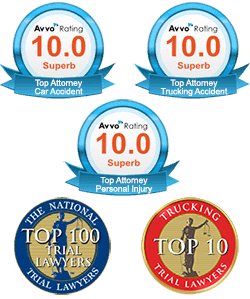 A proposed joint rule has been announced by the National Highway Traffic Safety Administration and Federal Motor Carrier Safety Administration that would mandate automatic emergency braking (AEB) systems in heavy trucks, aiming to reduce the occurrence and impact of rear-end collisions.
A proposed joint rule has been announced by the National Highway Traffic Safety Administration and Federal Motor Carrier Safety Administration that would mandate automatic emergency braking (AEB) systems in heavy trucks, aiming to reduce the occurrence and impact of rear-end collisions.
According to Zach Cahalan, the Executive Director of the Truck Safety Coalition, a national organization that advocates for the prevention of truck-related crashes, the current voluntary system adopted by vehicle manufacturers is not up to par with vehicle standards worldwide, including those of the European Union. This issue has been aggravated by the alarming increase in overall road deaths, with nearly 43,000 fatalities reported on U.S. roads in the previous year. This development has raised serious concerns amongst road safety advocates, who are troubled by the spike in fatalities during the pandemic era, following about 36,000 deaths overall in motor vehicle accidents in 2019.
The proposed measure would serve as a crucial element within the National Roadway Safety Strategy of the Department. Robin Hutcheson, the Administrator of the Federal Motor Carrier Safety Administration (FMCSA), emphasized that this technology has the potential to significantly enhance the effectiveness of strategies aimed at reducing crashes involving commercial motor vehicles. Furthermore, implementing this measure is expected to contribute to a reduction in roadway fatalities.
How the AEB System Works
An automatic emergency braking (AEB) system utilizes radar and camera-based sensors to detect potential collisions. Once detected, the system engages the vehicle’s brakes before the impact occurs. In situations where the driver has not applied the brakes or additional braking force is necessary, the AEB system takes over to provide the required braking action.
Under the proposed standard, the AEB technology would be required to operate effectively across a range of speeds, encompassing both low-speed (around 6 miles per hour) and high-speed (approximately 50 miles per hour) scenarios. This requirement specifically targets large trucks and other heavy vehicles weighing over 10,000 pounds.
According to the National Highway Traffic Safety Administration (NHTSA), there are approximately 60,000 rear-end crashes involving heavy vehicles each year, where the heavy vehicle is the striking vehicle. Additionally, the officials suggested amending Federal Motor Vehicle Safety Standards to require electronic stability control (ESC) systems on heavy vehicles to help stabilize vehicles that have deviated from their intended paths.
Stability control systems are essential to ensure that the automatic braking function works correctly, as stated by Ann Carlson, chief counsel for the National Highway Traffic Safety Administration.
Ann Carlson further mentioned that implementing both systems on all heavy vehicles could prevent an estimated 19,118 crashes, save 155 lives, and prevent 8,814 injuries annually. The proposal would be effective either three or four years after the rulemaking becomes final, depending on the stability control system deployment timeline.
AEB and ESC Systems as Standard Features in Latest Vehicle Models
Numerous latest models of vehicles already include AEB systems as a standard technological feature. According to the Insurance Institute for Highway Safety, 15 out of 20 automobile manufacturers in the country incorporate AEB systems in at least 95 percent of their cars. In addition to this, General Motors recently confirmed that AEB technology will be a standard feature in 98 percent of their 2023 vehicle models. For a long time, advocacy groups have been urging the implementation of AEB technology as a standard requirement in all automobiles.
The proposal would also require that vehicles weighing more than 10,000 pounds have an electronic stability control system (ESC) that works in unison with the AEB system. The proposal has been put forward as a result of petitions granted back in 2015 to various safety groups, alongside a congressional mandate established under the Bipartisan Infrastructure Law.
Proposal Welcomed by the American Trucking Association
The trucking industry supports the use of proven safety technology like automatic emergency braking.
The proposal was welcomed by the American Trucking Association, which has long supported the use of AEB on all new vehicles. Several safety groups have also expressed support for an AEB rule, including the Advocates for Highway and Auto Safety.
As stated by ATA’s vice-president for safety policy, Dan Horvath, “ATA has been a proponent of all new vehicles being equipped with AEB for quite some time. Hence, the recent regulation that mandates AEB for passenger vehicles by NHTSA is appropriate and timely, and the proposal for its implementation in heavy-duty trucks is a step in the right direction.”
Moreover, Mr. Horvath reiterated the trucking industry’s endorsement of safety technologies such as automatic emergency braking. He further added that they eagerly await the details of NHTSA and FMCSA’s proposal and are willing to work with them for its proper execution.
The National Transportation Safety Board included AEB for commercial vehicles in its 2021-2023 “Most Wanted List.” Several safety groups have also expressed support for an AEB rule, including the Advocates for Highway and Auto Safety.
Is Canada expected to adopt the AEB requirements?
The answer is not certain, as Transport Canada has been evaluating similar mandates and engaging with stakeholders as recently as the spring of 2021.
The regulatory body aims to coordinate with other countries in enforcing any proposed regulations, emphasizing an outcome-based approach that could promote standardization and minimize discrepancies with other countries.
Transport Canada is working closely with the U.S. National Highway Traffic Safety Administration (NHTSA) and the Federal Motor Carrier Safety Administration (FMCSA) in support of North American alignment of vehicle safety standards. A spokesperson confirmed that the agency is reviewing the U.S. AEB proposal and continues to conduct research.
Contact us
If you have sustained injuries in a truck accident, we urge you to get in touch with the skilled legal professionals at the Flick Law Firm at (816) 221-0501 to schedule a confidential consultation. During the meeting, we will thoroughly evaluate your case and discuss the measures we can take to help you recover compensation for your losses after a trucking accident.




